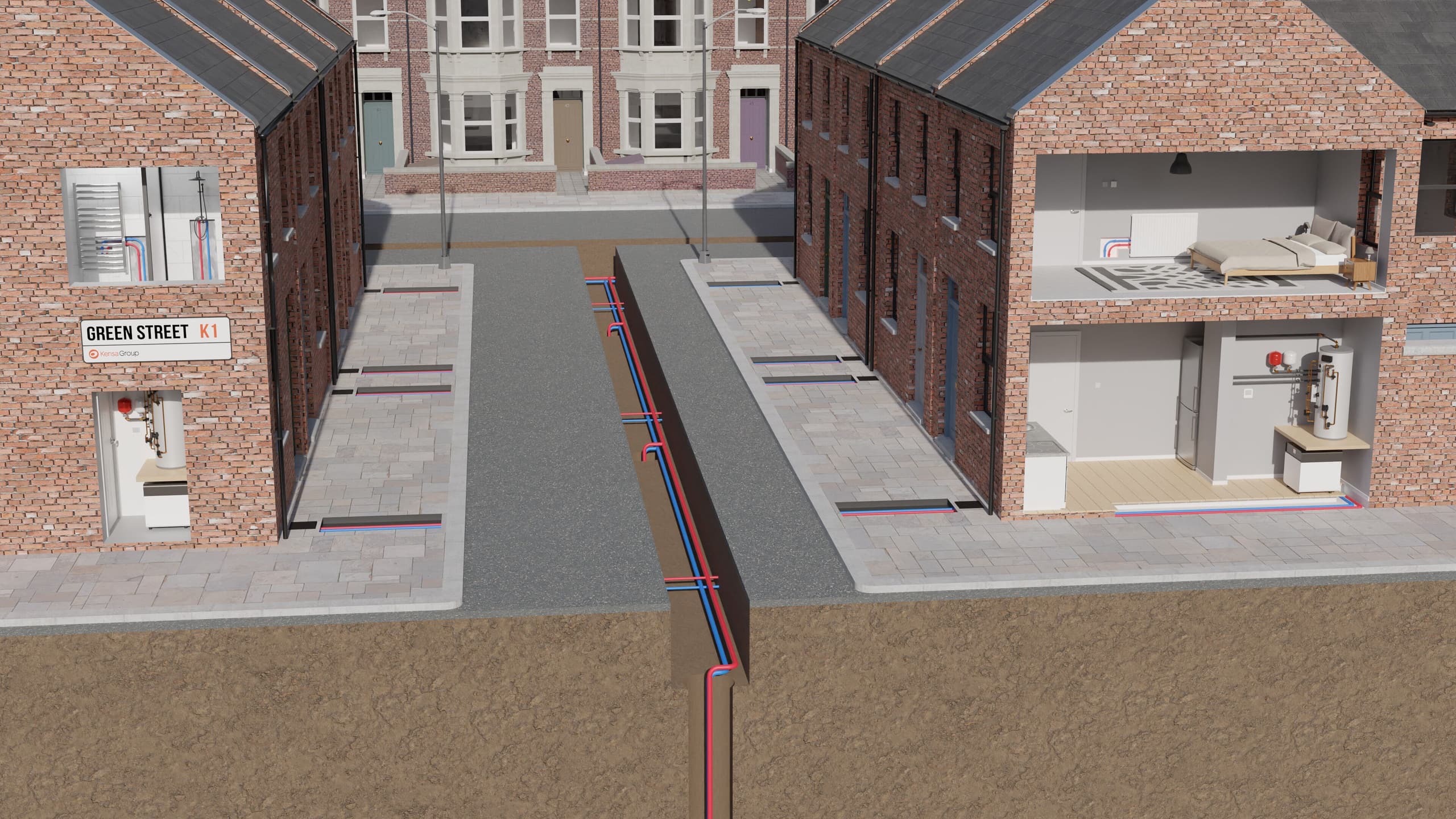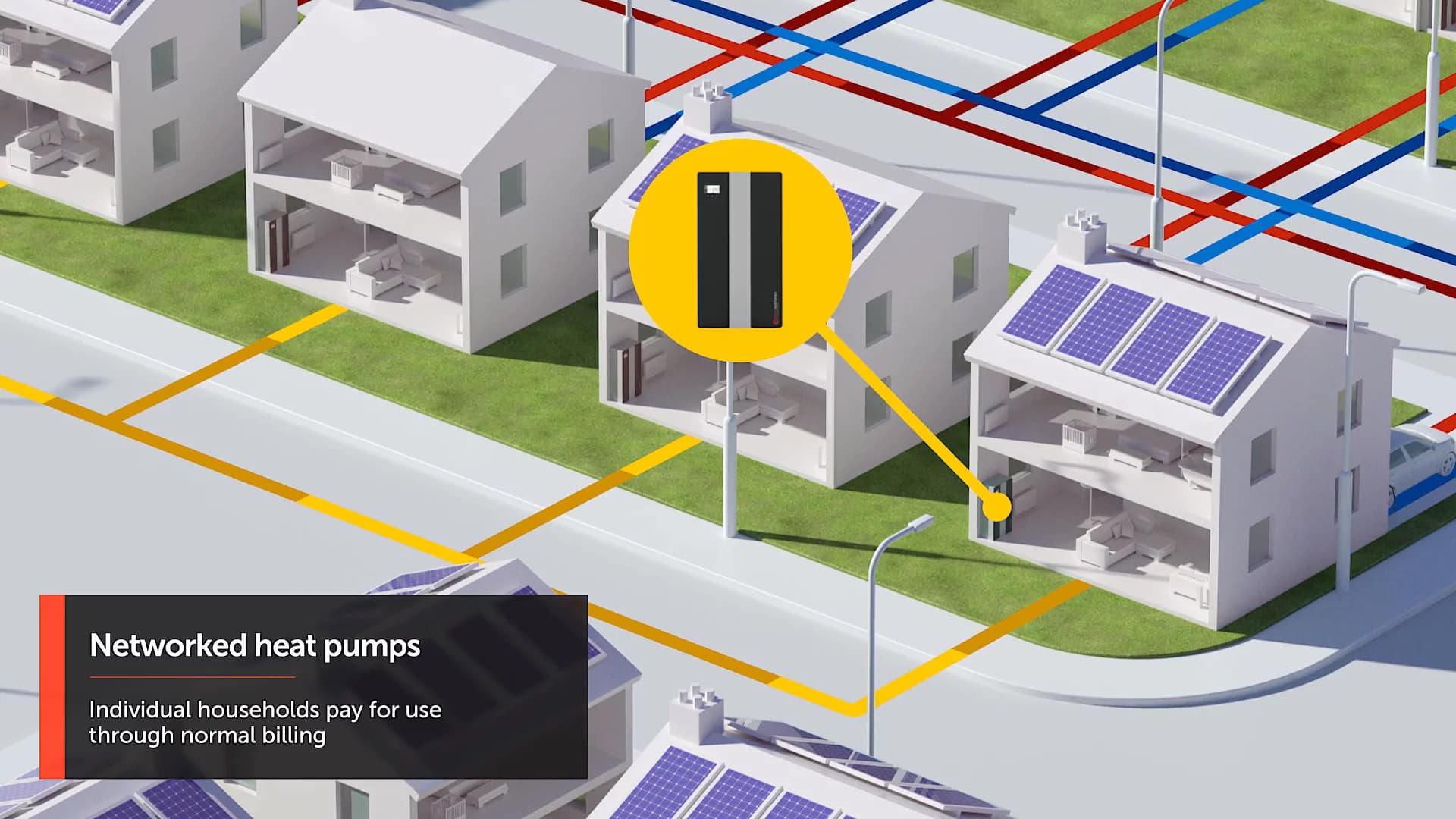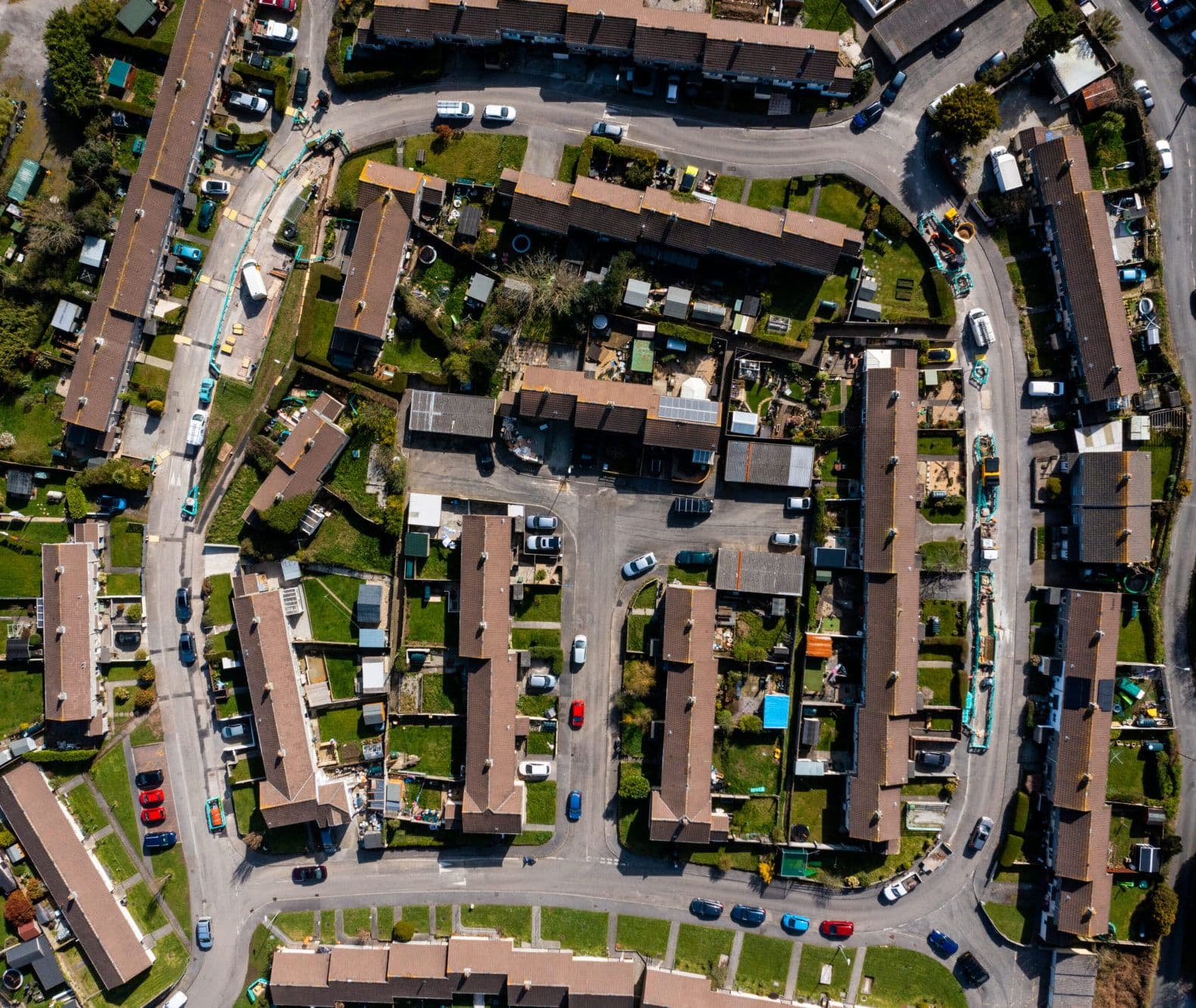How much do Networked Heat Pumps cost?
With Kensa’s ground array funding offers, Networked Ground Source Heat Pumps can cost less than Air Source Heat Pumps for house builders, landlords, home owners and residents.

Networked Heat Pumps provide heating and cooling for multiple properties and are the solution to providing low-carbon heat to entire communities for the lowest cost and grid impact.

Networked Heat Pumps are perfectly suited for new-build developments, terraced streets, tower blocks and tenements, avoiding the space constraints faced by air source heat pumps, networked heat pumps offer solution to decarbonise for mid-density housing.

The methods used to decarbonise and electrify heat in the UK will have profound implications for future power supply and demand.
With Kensa’s ground array funding offers, Networked Ground Source Heat Pumps can cost less than Air Source Heat Pumps for house builders, landlords, home owners and residents.
External investors like utility companies own the heat network infrastructure. This leaves property owners, developers and/or social landlords responsible for providing only the heat pump and internal distribution system, reducing risk and lowering upfront costs.
The utility can fund and look after the heat network infrastructure, just as utility providers do today for gas and other networks such as water, electricity, data, roads and waste disposal. They can charge connection fees in return if they wish to recoup costs, similar to the gas network standing charge.
Ambient temperature heat networks differ from traditional heat networks because each premises has its own ground source heat pump, which upgrades heat from the network only when it is needed in the property. This brings multiple benefits: